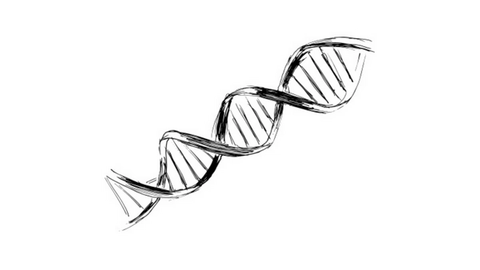XB002 Demonstrates Preliminary Safety/Tolerability in Advanced Solid Tumors
Early results from the phase 1 JEWEL-101 study show XB002 is well-tolerated in patients with advanced solid tumors.

Treatment with the investigational human monoclonal antibody, XB002, showed early safety and tolerability in patients with advanced solid tumors, according to results from the phase 1 JEWEL-101 study (NCT04925284).1
Results from the safety and pharmacokinetic analyses of JEWEL-101 showed that treatment was well-tolerated at multiple dose levels, and the XB002 was stable with low levels of free payload.
“Following promising preclinical data, it is encouraging to see that XB002 was well-tolerated across multiple dose levels with a pharmacokinetic analysis supporting the ability of XB002 to remain stable after infusion and reach its target before releasing its cytotoxic payload,” said Susanna Ulahannan, MD, MMed, assistant professor of Medicine in the Section of Hematology/Oncology, University of Oklahoma College of Medicine and Associate Director of Oklahoma TSET phase 1 program, OU Health Stephenson Cancer Center at the OU Health Sciences Center, in a press release. “As the dose-escalation phase progresses, and we initiate enrollment into tumor specific cohorts, I look forward to learning more about how XB002 may benefit people with advanced solid tumors, in particular in tumor types with high unmet need.”
Nineteen patients were assessed across 5 dose cohorts for the phase 1 dose-escalation portion of the study. Three patients were treated with XB002 0.16 mg/kg, 3 received 0.5 mg/kg, 6 received 1.0 mg/kg, 3 were treated with 1.5 mg/kg, and 4 received 2.0 mg/kg. Of those enrolled, most had pancreatic cancer, colorectal cancer, cervical cancer, or prostate cancer. Patients had a median age of 63 years, 63% of patients enrolled had an ECOG performance score of 1, and 79% had received at least 3 prior lines of therapy.
The primary end points of the study are determining the maximum-tolerated dose and recommended phase 2 dose of XB002, and objective response rate. The secondary end points of the study include safety, tolerability, pharmacokinetics, objective response rate, duration of response, progression-free survival, and overall survival.2
Thus far, investigators have not determined the recommended tolerated dose of XB002 or the maximum-tolerated dose. No dose-limiting toxicities have been observed in the study. It was noted that radiographic progression in 47% of patients, treatment-emergent adverse events (TEAEs) in 11%, lack of clinical benefit in 11%, and patient request other than adverse events in 16% were the most common reasons for treatment discontinuation.1
Regarding safety, 42% of patients had grade 3 TEAEs, but no grade 4/5 events were observed. Treatment-related AEs (TRAEs) occurred in 63% of patients, but all were grade 1/2 events except 1 grade 3 case of hypertension. Grade 1-3 TRAEs were all improved or resolved prior to patients receiving the next XB002 dose level. Serious AEs occurred in 16% of patients. All serious AEs were found to be unrelated to XB002. There were grade 3 serous AEs in 2 patients, which were COVID-19-induced pneumonia and diarrhea. There was also a serious case of bacteremia. Use of anticoagulant agents in 42% of the study population notably did not cause any bleeding events.
Ocular TEAEs were seen in 42% of patients and included noninfective conjunctivitis (26%) and dry eye (16%). Both events were related to XB002 treatment. The incidence of ocular events was higher at the 2 mg/kg dose level (75%) compared with all other dose levels (33%). There was no corneal toxicity observed during the study. All ocular events appeared to be reversible with supportive care consisting of either lubricating, vasoconstrictive, corticosteroid, or antibiotic eyedrops.
In terms of pharmacokinetics, the XB002 total antibody and intact antibody-drug conjugate pharmacokinetics were similar. Specifically, at the 2.0 mg/kg dose level, the mean AUC0-t was 121 μg∙day/mL for intact antibody-drug conjugate and 4.21 ng∙day/mL for free payload. The mean Cmax was 46.6 μg/mL and 0.809 ng/mL.
A preliminary efficacy analysis revealed no objective response in patients treated with XB002. However, 3 patients with stable disease are continuing treatment with treatment duration ranging from 7 to 42 weeks. The efficacy of XB002 alone and in combination with nivolumab (Opdivo) will be evaluated further in the upcoming cohort-expansion stage of the study.
“We are eager to proceed to the expansion cohort stage of JEWEL-101 once the recommended dose is determined, as we aim to further understand the activity of this molecule as a potential new treatment for people who have difficult-to-treat tumors with limited treatment options,” said Vicki L. Goodman, MD, executive vice president, Product Development & Medical Affairs, and chief medical officer of Exelixis, in the press release.
REFERENCES:
1. Exelixis announces promising initial dose-escalation results from the first-in-human phase 1 JEWEL-101 trial evaluating XB002 in patients with advanced solid tumors at ENA 2022. News release. Exelixis, Inc. October 26, 2022. Accessed October 27, 2022. https://bit.ly/3W1RAtj
2. Study of XB002 in subjects with solid tumors (JEWEL-101). ClinicalTrials.gov. Updated May 18, 2022. Accessed October 27, 2022. https://clinicaltrials.gov/ct2/show/NCT04925284